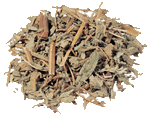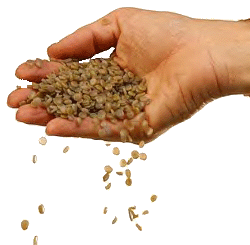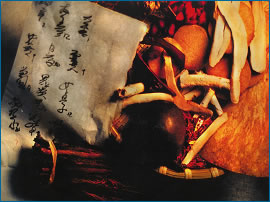Overview
What is Traditional Chinese Medicine?
Traditional Chinese Medicine (TCM) is a complete medical system that has been used to diagnose, treat, and prevent illnesses for more than 2,000 years. TCM is based on a belief in yin and yang —defined as opposing energies, such as earth and heaven, winter and summer, and happiness and sadness. When yin and yang are in balance, you feel relaxed and energized. Out of balance, however, yin and yang negatively affect your health.
Practitioners also believe that there is a life force or energy in every body, known as qi (pronounced "chee"). In order for yin and yang to be balanced and for the body to be healthy, qi must be balanced and flowing freely. When there's too little or too much qi in one of the body's energy pathways (called meridians), or when the flow of qi is blocked, illness results.
The ultimate goal of TCM treatment is to balance the yin and yang in our lives by promoting the natural flow of qi . In an interesting analogy, often used to explain its nature, qi is described as the wind in a sail; we do not see the wind directly, but we are aware of its presence as it fills the sail .
What is the history of TCM?
The first writings about TCM date back to 200 B.C.E. Herbal medicine and acupuncture, including theory, practice, diagnosis, and treatment, were recorded in classical Chinese texts and refined over many centuries.
The practice of TCM stayed in Asia for centuries. Chinese immigrants had been practicing TCM in the United States since the mid-19th century, but its existence was unknown to most Americans before 1971. That year, New York Times reporter James Reston, who was in China covering former President Nixon's trip, had to have an emergency appendix operation. After the operation he received acupuncture for pain, and his stories about this experience with TCM fascinated the public. Since then, TCM has gone on to become a mainstream alternative medicine practiced all over the world.
 How does TCM work?
How does TCM work?
Disease (alterations in the normal flow of qi such that yin and yang are imbalanced) is thought to have three major causes: external or environmental factors, your internal emotions, and lifestyle factors such as diet. Through the use of its therapeutic modalities, TCM stimulates the body's own healing mechanisms. Practices used in TCM include:
- acupuncture and acupressure

- moxibustion (burning an herb near the skin)
- herbal medicine
- nutrition
- Chinese massage (called tui na)
- Exercise (such as tai chi and qi gong which combine movement with meditation)
In TCM, the body's internal organs are not thought of as individual structures, but as complex networks. According to TCM, there are five organ systems (kidney, heart, spleen, liver, and lung) through which qi flows via meridians. Despite their specific names, these five systems correspond to more than individual body parts. The kidney, for example, represents the entire urinary system along with the adrenal glands that sit a top of the kidneys. The heart represents both the heart and the brain.
What should I expect on my first visit?
The TCM practitioner will ask you questions about your medical history and conduct a physical exam to look for signs of imbalance. I will examine your skin, tongue, and hair, as well as other parts of your body (from the brightness of your eyes to the color of your nails), and will check six pulses on each of your wrists. The practitioner will also listen to your voice to assess your shen (spirit), and will work to determine if one or more of your organ networks are affected. I will then try to correct any imbalances in your body by providing a combination of the therapies discussed above.
What is TCM good for?
Over the centuries, TCM has been used to treat countless conditions. Western scientists are still studying its effectiveness for various diseases. Some of the conditions for which TCM is known to be particularly helpful include:
- obesity
- diabetes and its complications such as retinopathy (damage to the retina located in the back of the eye)
- high cholesterol
- male and female fertility disorders
- Alzheimer's disease
- digestive disorders (such as irritable bowel syndrome)
- recurrent cystitis (inflammation of the bladder)
TCM may also be an effective treatment for the following ailments:
- allergies
- sinusitis
- addictions
- pain (including childbirth and abdominal)
- menopausal symptoms
- osteoporosis
- arthritis
- infections (respiratory, bladder, vaginal)
- sleep disorders
- stress
- constipation
 Is there anything I should watch out for?
Is there anything I should watch out for?
You should not treat yourself with Chinese herbs, especially if you are pregnant or nusing. Over-the-counter herbal products are often poorly labeled, and important information may be missing. Some herbal products contain drugs not listed on their labels. For example, some Chinese herbal creams that are used to treat eczema contain steroid medications. Also, be on the alert for Chinese herbal medicines containing aristolochic acid. This acid, derived from an herb, has been implicated in nearly 100 cases of kidney failure and even cancer. As a trained and certified TCM practitioner, I can identify herbs that are safe to take. I will also explain the potential side effects of the herbs prescribed.
Supporting Research
Alraek T, Aune A, Baerheim A. Traditional Chinese medicine syndromes in women with frequently recurring cystitis: frequencies of syndromes and symptoms. Complement Ther Med . 2000;8(4):260-265.
Armstrong NC, Ernst E. The treatment of eczema with Chinese herbs: a systematic review of randomized clinical trials. Br J Clin Pharmacol. 1999;48(2):262-264.
Becker SA. Treatment by Chinese medicine: semen anomalies. J Chin Med. 2000;62:46-51.
Bensoussan A, Myers SP, Carlton Al. Risks associated with the practice of traditional Chinese medicine: An Australian study. Arch Fam Med. 2000;9:1071-1078.
Bensoussan A, Talley NJ, Hing M, Menzies R, Guo A, Ngu M. Treatment of irritable bowel syndrome with Chinese herbal medicine. JAMA. 1998;280(18):1585-1589.
Chan C, Ho PS, Chow E. A body-mind-spirit model in health: an Eastern approach. Soc Work Health Care. 2001;34(3-4):261-282.
Chen TS, Chen PS. The liver in traditional Chinese medicine. J Gastroenterol Hepatol. 1998;13:437-442.
Chen YY, Hsue YT, Chang HH, Gee MJ. The association between postmenopausal osteoporosis and kidney-vacuity syndrome in traditional Chinese medicine. Am J Chin Med. 1999;27(1):25-35.
Cheng JT. Review: drug therapy in Chinese traditional medicine. J Clin Pharmacol . 2000;40(5):445-450.
Cohen MR. Herbal and complementary and alternative medicine therapies for liver disease. A focus on Chinese traditional medicine in hepatitis C virus. Clin Liver Dis. 2001;5(2):461-478, vii.
Ehling D. Oriental medicine: an introduction. Altern Ther Health Med. 2001;7(4):71-82.
Ergil KV. China's traditional medicine. In: Micozzi MS, ed. Fundamentals of Complementary and Alternative Medicine. New York, NY: Churchill Livingstone Inc.; 1996:185-223.
Fink MG, Wipperman B, Gehrke A. Non-specific effects of traditional Chinese acupuncture in osteoarthritis of the hip. Complement Ther Med. 2001;9(2):82-89.
Glover C, Phillipson D, Leon C, et al. Traditional Chinese Medicine. Pharm J. 1999;263:796-798.
Guillaume G. Postmenopausal osteoporosis and Chinese medicine. Am J Acupuncture . 1992;20:105-111
Ignjatovic V, Ogru E, Heffernan M, Libnaki R, Lim Y, Ng F. Studies on the use of "Slimax," a Chinese herbal mixture, in the treatment of human obesity. Pharm Biol. 2000;38(1):30-35.
Kausland A. The treatment of constipation by Chinese medicine. J Chin Med. 1995;47:17-22.
Keane FM, Munn SE, du Vivier AW, Higgins EM. Analysis of Chinese herbal creams prescribed for dermatological conditions. BMJ. 1999;318(7183):563-564.
Lee MS, Yang KH, Huh HJ, et al. Qi therapy as an intervention to reduce chronic pain and to enhance mood in elderly subjects: a pilot study. Am J Chin Med. 2001;29(2):237-245.
Lewis CJ, Alpert S. Letter to Health Care Professionals on FDA Concerned about Botanical Products, Including Dietary Supplements, Containing Aristolochic Acid. Washington, DC: U.S. FDA Center for Food Safety and Applied Nutrition; May 31, 2000.
Li M, Chen K, Mo Z. Use of qigong therapy in the detoxification of heroin addicts. Altern Ther Health Med. 2002;8(1):50-54, 56-59.
Luwen G. Wen dan tang and diabetic retinal disease. J Chin Med. 2000;62:20-22.
Mayer M. Qigong and hypertension: a critique of research. J Alt Comp Med. 1999;5:371-382.
Moyad MA, Hathaway S, Ni HS. Traditional Chinese medicine, acupuncture, and other alternative medicines for prostate cancer
Nestler G. Traditional Chinese medicine. Med Clin North Am . 2002;86(1):63-73.
Nortier JL, Martinez MC, Schmeiser HH, et al. Urothelial carcinoma associated with the use of a Chinese herb. N Engl J Med . 2000;342(23):1686-1692.
OU-COM. OU medical school teams with Chinese universities [press release]. Athens: Ohio University College of Osteopathic Medicine; April 29, 2000.
Parker MJ. Traditional Chinese herbal medicine. In: Novey DW, ed. Clinician's Complete Reference to Complementary and Alternative Medicine. St. Louis, Mo: Mosby; 2000:203-218.
Tang JL, Zhan SY, Ernst E. Review of randomised controlled trials of traditional Chinese medicine. BMJ. 1999;319:160-161.
Tao X, Lipsky PE. The Chinese anti-inflammatory and immunosuppressive herbal remedy Tripterygium wilfordii Hook F . Rheum Dis Clin North Am. 2000;26(1):29-50.
UPMC. Chinese government officials visit UPMC health system to establish ties with International Traditional Chinese Medicine Center [press release]. Pittsburgh: University of Pittsburgh Medical Center Health System; January 20, 2000.
Wong R, Sagar CM, Sagar SM. Integration of Chinese medicine into supportive cancer care: a modern role for an ancient tradition. Cancer Treat Rev. 2001;27(4):235-246.
Yang CS, Lin CH, Chang SH, Hsu HC. Rapidly progressive fibrosing interstitial nephritis associated with Chinese herbal drugs. Am J Kidney Dis. 2000;35(2):313-318.
Yuan R, Lin Y. Traditional Chinese medicine: an approach to scientific proof and clinical validation. Pharmacol Ther. 2000;86:191-198.
Zell B, Hirata J, Marcus A, et al. Diagnosis of symptomatic postmenopausal women by Traditional Chinese Medicine practitioners. Menopause. 2000;7:129-134.
- Review Date: 12/1/2002
- Reviewed By: Jacqueline A. Hart, MD, Department of Internal Medicine, Newton-Wellesley Hospital, Boston, Ma and Senior Medical Editor A.D.A.M., Inc.; Lonnie Lee, MD, Internal Medicine, Silver Springs, MD.
 |
A.D.A.M., Inc. is accredited by URAC, also known as the American Accreditation HealthCare Commission (www.urac.org). URAC's accreditation program is the first of its kind, requiring compliance with 53 standards of quality and accountability, verified by independent audit. A.D.A.M. is among the first to achieve this important distinction for online health information and services. Learn more about A.D.A.M.'s editorial process . A.D.A.M. is also a founding member of Hi-Ethics (www.hiethics.com) and subscribes to the principles of the Health on the Net Foundation (www.hon.ch). |
The information provided herein should not be used during any medical emergency or for the diagnosis or treatment of any medical condition. A licensed medical professional should be consulted for diagnosis and treatment of any and all medical conditions. Call 911 for all medical emergencies. Links to other sites are provided for information only -- they do not constitute endorsements of those other sites. © 1997-2007 A.D.A.M., Inc. Any duplication or distribution of the information contained herein is strictly prohibited.


